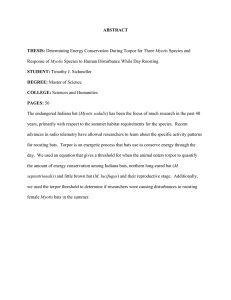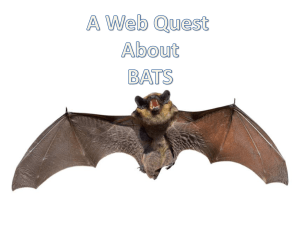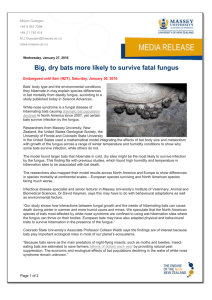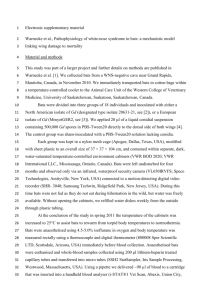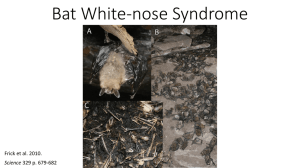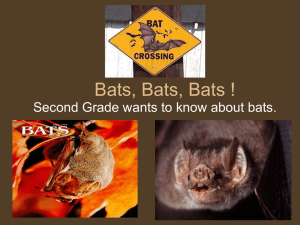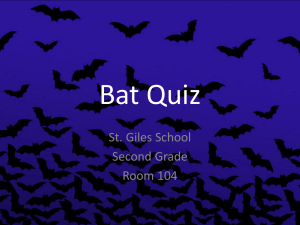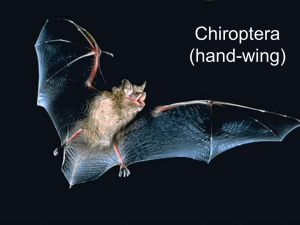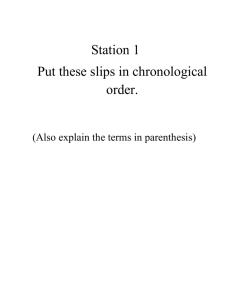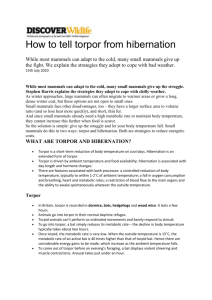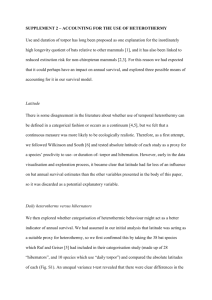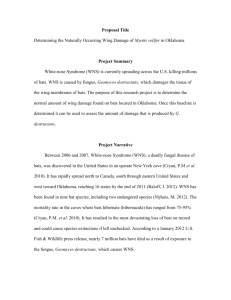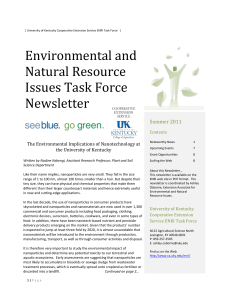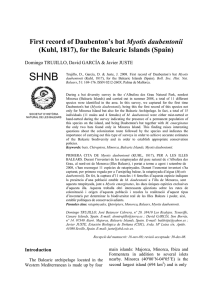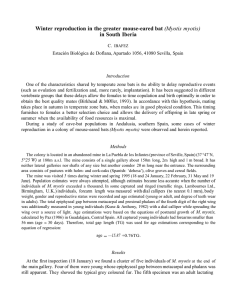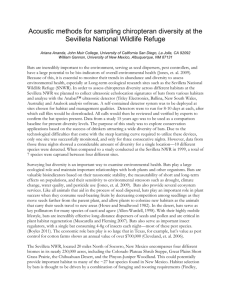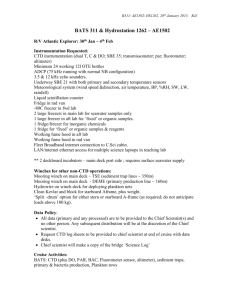PowerPoint Presentation - Energetics and hibernation
advertisement
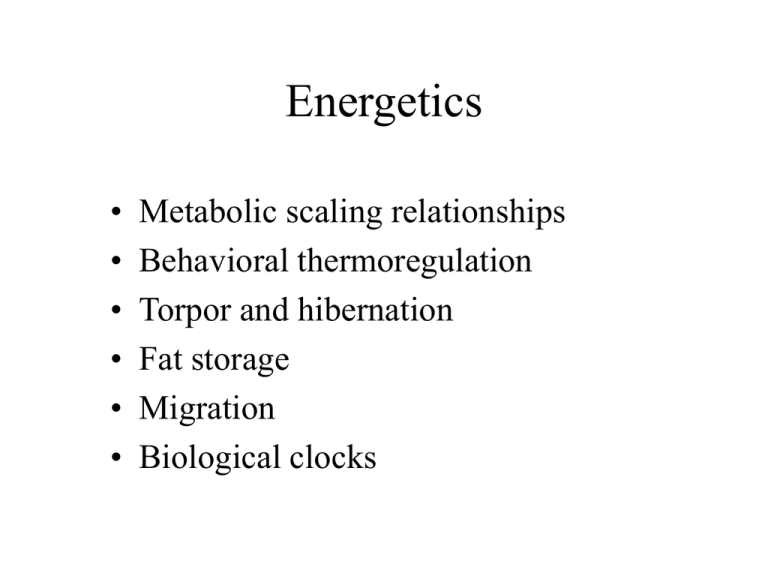
Energetics • • • • • • Metabolic scaling relationships Behavioral thermoregulation Torpor and hibernation Fat storage Migration Biological clocks Discussion Readings • Kortner, G. and F. Geiser 2000 The temporal organization of daily torpor and hibernation: circadian and circannual rhythms. Chronobiology International 17:103128. • Geiser, F. and R.M. Brigham 2000 Torpor, thermal biology and energetics in Australian long-eared bats (Nyctophilus) J. Comp. Phyiol. B 170:153-162. • Park, K. J., G. Jones, and R. D. Ransome. 2000. Torpor, arousal and activity of hibernating Greater Horseshoe Bats (Rhinolophus ferrumequinum). Functional Ecology 14:580-588. Aerobic respiration • Occurs in mitochondria of all aerobic organisms • Glucose + oxygen + water => carbon dioxide + water + energy • C6H12O6 + 6O2 + 6H2O => 6CO2 + 12H2O + energy • Energy is stored by converting ADP -> ATP • 1 mole of glucose contains 670 kcal • Consequently, oxygen consumption can be used to measure energy production Energetics of homeothermy Homeothermy: maintain constant warm body temperature. Most mammals are at 35-39oC Heterothermic: allow body temp to fall with ambient temperature Animals must spend energy to keep warm or cool off when the ambient temperature is out of their thermal neutral zone Energy expenditure in the western pipistrelle (Pipistrellus hesperus) Thermal conductance Heat conduction occurs when there is a temperature difference between body and air. Depends on surface area of animal. Measured as the amount of energy needed to maintain that difference. Note that small mammals have high conductance due to high surface area to volume ratios. Bats have higher conductance than other mammals due to large lungs and large wing membranes Log-log plot Metabolic rate scales with body mass.75 Note: if y = aMb then log y = log a + b*logM If b < 1, then y increases slower than M If b > 1, then y increases faster than M Therefore, mass specific metabolic rate declines with body size in birds and mammals Nonflying eutherian mammals Diet influences metabolic rate Reasons for energy budget fluctuations Availability - e.g. seasonality Demand - e.g. pregnancy Both - e.g. winter, night Lactation is costly Roost selection Behavioral thermoregulation Nycticeius humeralis Evening bats Phyllostomus hastatus Greater spear-nosed bats Torpor is a reduction in body temperature Torpor saves energy Energy use increases linearly as ambient temperature decreases for an active animal that maintains a constant body temperature Arousal from torpor can be expensive Hibernation = long torpor Ground squirrel maintained at 4oC Hibernation has evolved twice in bats and has allowed some species to occupy cold climates Vespertilionidae Rhinolophidae Hibernacula temperature preferences During hibernation bats maintain body temperature about 1oC above ambient, but rarely below 6oC Some bats move north to hibernate Gray bat (Myotis sodalis) Bats rarely roost deep in caves because the temperature is too warm. Consequently, they have to move when it gets cold or warm outside. This makes them vulnerable to disturbance during hibernation. Body weight during hibernation Bats can arouse faster than other hibernators a =ventral temperature, b = rectal temperature Due to nonshivering thermogenesis Myotis myotis Brown adipose tissue (BAT) contains fat cells with many blood vessels and mitochondria which gives the tissue a brown color. When BAT is oxidized, the blood is heated quickly. BAT seasonal accumulation Myotis californicus Migration permits other species to occupy temperate regions Molossidae Phyllostomatidae Temperate migration patterns Nyctalus noctula Noctule Lasiurus cinereus Hoary bat Migration routes of lesser longnosed bats (Leptonycteris curasoae) Feed on cactus going north, agave going south Biological clocks • Clock periods – Circannual – Circalunidian – Circadian • Clock Entrainment Hibernation follows annual rhythm in golden-mantled ground squirrels Five animals were isolated at birth and kept in darkness at 3oC Circannual clocks in bats Testes growth and feather molt in stonechats follows annual cycles Qu ickT ime™ an d a T IFF ( Unco mpr esse d) de com press or a re ne eded to s ee th is pi cture . Nestlings were removed from Kenya and reared in Germany with constant temperature and photoperiod and yet retain annual molt and testes cycles. Notice that the clock period drifted. Kangaroo rat feeding shows lunar cycles K-rat activity at a feeder is confined to dark periods Quic kT ime™ and a T IFF (Unc ompres sed) dec ompres sor are needed to see this pic ture. occurred during period of seed shortages Vampire bats also avoid moonlight Entrainment by environmental cycles • Environmental cues set cycle period – Species specific • Types of cues – Photoperiod – Light pulse – Food availability Mouse activity entrains to light 12h light:12h dark 24 h dark 10 min light 10 mins of light per day are sufficient to reset the clock Frequency of flights within a cave by Myotis Note that bats show strong circadian rhythm before and after winter Distribution of circadian clocks in tissues and taxa Mammalian clock pathways Clock summary • per/tim/tau(dbt) genes control pacemaker • Pacemaker occurs in SCN (suprachiasmatic nucleus) in vertebrates, but is distributed in brain cells in some insects • SCN signals pineal gland to release melatonin • Short pulses of light entrain SCN and pineal cells • Drosophila, honey bees, hamsters and humans share same genes - likely common ancestor was a flatworm that lived about 600 MYA
